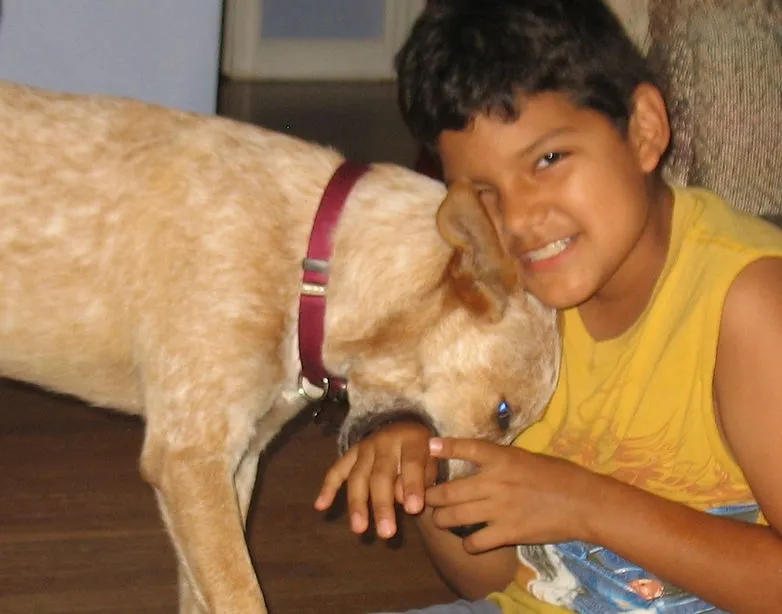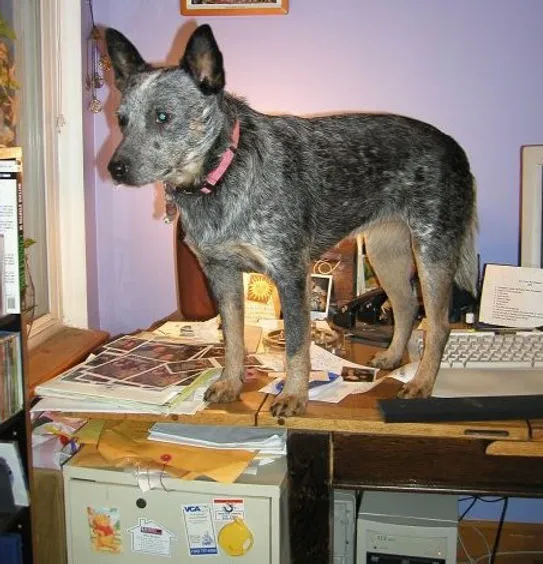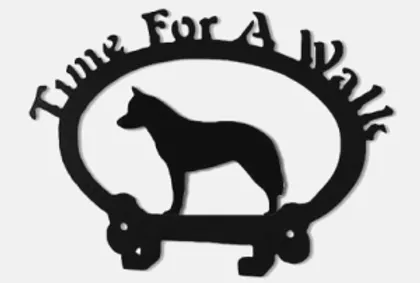Australian Cattle Dogs (ACDs), with their sharp intelligence, boundless energy, and unwavering loyalty, are magnificent companions. Bred for herding livestock across vast, rugged landscapes, these dogs possess a unique set of traits that make them exceptional working animals. However, these same characteristics, when not properly understood or managed, can lead to a range of challenging Australian Cattle Dog Behavior Problems. For owners, recognizing and addressing these issues early is crucial for fostering a well-adjusted and happy dog. This comprehensive guide delves into common behavioral challenges faced by ACDs and provides actionable strategies to prevent and resolve them, ensuring a harmonious life for both you and your canine partner.
Understanding Aggression in Australian Cattle Dogs
Aggression, particularly towards strangers, is one of the most frequently reported Australian Cattle Dog behavior problems. This trait often emerges as the dog reaches adolescence, typically between 8 months and 2 years of age. If left unaddressed, this behavior can escalate as the dog learns that aggression effectively makes unwanted people retreat. Understanding the roots of this behavior is key to managing it effectively.
Inherited Tendencies and Socialization
A significant portion of aggressive tendencies in ACDs is inherited. These dogs were selectively bred to control large herds and protect property from perceived threats, leading to a natural suspicion of strangers and a strong territorial instinct. Dogs that were overly friendly to unfamiliar individuals would not have been effective at their original jobs. The challenge arises when these working instincts manifest in a pet environment, with the dog deciding who is and isn’t a threat rather than deferring to their owner’s judgment.
Proper socialization from a very young age is paramount. “Socializing” an ACD puppy means exposing them to a wide variety of people, situations, and environments in a positive and controlled manner. It’s about teaching the puppy that novel experiences and strangers can be safe and rewarding. This does not mean overwhelming a puppy with large crowds; rather, it involves gradual, positive exposure that builds confidence. A well-socialized ACD learns to look to their human for direction in new or potentially stressful situations, trusting their owner’s leadership. Basic obedience training, started early, also provides the pup with a sense of security and a clear means of communication with their owners.
The Dangers of Punishment
Paradoxically, punishing an ACD for growling or showing fear towards strangers can inadvertently worsen aggression. Growling, cowering, or other displays of fear are the dog’s way of communicating discomfort or anxiety. If these warning signals are suppressed through punishment, the dog may learn that such communication is ineffective or even penalized. This can lead the dog to bypass the warning signs and resort to more severe forms of aggression, such as biting, without prior indication. Instead of punishing fear, focus on positive reinforcement and counter-conditioning to change the dog’s emotional response to triggers. If your dog exhibits aggressive tendencies, seeking guidance from a qualified professional behaviorist is highly recommended to develop a safe and effective management plan.
Resource Guarding and Prevention
Other common forms of aggression in Australian Cattle Dogs include resource guarding, food guarding, and guarding specific spaces from people or other animals. These types of Australian Cattle Dog behavior problems should ideally be prevented from an early age. Instead of attempting to “toughen up” a puppy by taking away their food or toys, which can actually promote guarding, employ positive reinforcement techniques. Hand-feeding, practicing object exchanges (trading a less desirable item for a more desirable one), and performing food bowl training exercises (approaching the bowl, adding a high-value treat, and leaving) can teach a puppy that human presence around their resources is a positive experience. This builds trust and reduces the likelihood of guarding behaviors developing.
Managing Mouthing and Nipping in ACD Puppies and Adults
Australian Cattle Dog puppies are notoriously mouthy. For dogs, their mouths are often equivalent to our hands, making mouthing and nipping perfectly normal behaviors that require careful guidance. Whether it’s a puppy or an older dog, the approach to curb this common Australian Cattle Dog behavior problem is largely consistent.
Teaching Bite Inhibition
The first crucial step is to ensure your pup learns “inhibited” biting, meaning they learn not to bite hard. Puppies typically learn this from their mother and littermates between 6 and 12 weeks of age. If a puppy nips too hard, their sibling will yelp, and play will stop, teaching them to moderate their bite pressure. Humans can continue this lesson. The ultimate goal is to teach the puppy that putting teeth on human skin is never acceptable.
When your puppy tries to mouth you, immediately substitute an appropriate chew toy. Lavish praise on them when their mouth is on the toy. Anticipate when the puppy is about to bite and insert the toy before their teeth reach you. Consistency is vital, as it takes time and repetition for the message to sink in. Be prepared for occasional setbacks, and simply continue to reinforce the desired behavior.
 A young Australian Cattle Dog puppy gently nipping a person's hand, while a red toy lies nearby on the floor.
A young Australian Cattle Dog puppy gently nipping a person's hand, while a red toy lies nearby on the floor.
Redirection and Consistent Training
If the puppy does make contact with your skin, issue a loud, convincing yelp to communicate that you are hurt. A genuine yelp often startles the pup, causing them to release your hand. This technique is particularly effective with younger dogs but can work with older ones too. Immediately praise and offer a treat when their mouth is not on you, reinforcing that human skin is extremely delicate and requires very gentle contact, if any. Afterward, redirect them to a toy and offer praise/treats as before.
To further augment these lessons, if the puppy persistently tries to mouth, immediately remove your availability. Turn your back and ignore them for 10 to 15 seconds. Then, turn back and, before they can mouth again, present an acceptable toy, praising when it’s in their mouth, and offering a high-value treat. Teach a “sit” as a greeting behavior and reward it generously. For older dogs, you might need to use gates or doors to create a brief “time-out” area. Actively teach incompatible behaviors, such as a “sit” or “down,” as a replacement for mouthing.
Your puppy must learn that “mouth on person” means all people will ignore them, refuse to play, and leave them alone. This lack of interaction is highly undesirable for an ACD puppy who loves their humans. Conversely, they must consistently learn that “mouth on chew toy” garners positive attention and rewards from humans.
The “Yelp” and “Time-Out” Methods
If persistent mouthing continues, implement a “three strikes” rule. Gently remove the pup’s mouth from your hand and attempt to redirect to a toy. If the pup immediately ignores the toy and continues to grab your hand for the third time, calmly (without emotion) leave the area and give them a 30-to-60-second “time out,” or until they calm down. Then, return and try again. This is not about punishment; it’s about teaching a natural consequence: mouthing leads to a loss of human contact. The puppy learns that “mouthing gets me removed from human contact” just as “water gets me wet.” There should be no retribution, only a clear lesson about the “laws of the universe.” Ensure play only continues when the dog’s mouth remains off humans. Since ACDs are deeply bonded with their owners, they will eventually learn that their teeth on your skin or clothes do not yield the desired results.
Addressing Separation-Related Behaviors
Australian Cattle Dogs are highly intelligent and require significant physical and mental engagement. When left alone for extended periods without adequate stimulation, they can develop destructive behaviors, excessive barking, or other signs of anxiety, which are common Australian Cattle Dog behavior problems related to separation.
The Need for Physical Exercise
For ACDs, a simple walk around the block, or even several blocks, is often insufficient. These dogs need to run and expend their substantial energy daily to reach a state of “tiredness.” Fetch games with a ball or Frisbee in a large, open area are excellent for providing high-intensity physical exercise. Even repeated short retrieves in a smaller space, or playing up and down stairs indoors, can provide a good workout.
Consider hiring a professional dog walker or enlisting a reliable friend or neighbor to provide midday exercise and play sessions. Some owners find that doggy daycare a few times a week makes a significant difference in managing their ACD’s energy levels and preventing destructive behaviors while they are at work. Adequate physical activity is often the simplest solution to many behavior problems.
 A watchful Australian Cattle Dog sits calmly looking out of a window, observing the outside world.
A watchful Australian Cattle Dog sits calmly looking out of a window, observing the outside world.
Crucial Mental Stimulation
Beyond physical exertion, Australian Cattle Dogs require mental exercise to stay content and “out of trouble.” Mental stimulation involves tasks that require the dog to think and problem-solve. Try teaching new tricks, engaging in scent games, or playing hide-and-seek with toys or treats, both indoors and outdoors.
Consider replacing “free-food-in-a-bowl” meals with food puzzles or enrichment toys. Stuffing a Kong or two with your dog’s daily meal and freezing it can provide a long-lasting activity while you’re away. Scattering kibble widely for them to “hunt” down their meal also engages their natural foraging instincts. Raw, meaty bones or other treat-dispensing toys can also keep them occupied for extended periods, providing both mental exercise and a sense of purpose. If your dog enjoys tugging, consider hanging a sturdy tug toy from a doorway or tree. If destructive behavior persists, a crate or ex-pen used with stuffed Kongs can provide a safe and supervised confinement area. Remember that ACDs are natural den animals, and a properly introduced crate can be a comforting space.
Professional Support Options
Teaching obedience and agility exercises offers both physical and mental benefits in one package. Regular practice can effectively tire out an ACD. If you’re struggling with separation-related Australian Cattle Dog behavior problems, or any behavioral issue, getting help from a qualified professional behaviorist or trainer can be invaluable. Aggression, for instance, is rarely solved in a group obedience class; it typically requires one-on-one sessions with someone experienced in animal learning theory and aggression cases. When seeking a professional, ensure they are certified and have positive references, as anyone can claim to be a dog trainer. Organizations like ccpdt.org offer trainer search functionalities by zip code or state to help you find qualified professionals.
Successful Introductions to Other Pets
Introducing an Australian Cattle Dog to other animals, especially new dogs or existing cats, can present unique challenges due to their herding instincts and potential territoriality. Managing these interactions carefully can prevent significant Australian Cattle Dog behavior problems.
Introducing to Other Dogs
When introducing a new dog to your current dog, neutral territory is always best, as it minimizes territorial instincts. If possible, enlist a friend’s help. A popular technique involves taking the dogs for a parallel walk. Start with both humans in the center, walking briskly. After a few minutes, move one dog to the inside (dog-human-dog-human), then swap the other dog to the inside, allowing them to sniff each other safely while continuing the walk. This continuous movement helps them settle down and reduces over-excitement. Once both dogs seem calm and can interact without tension, move the interaction into your home or yard, allowing them to interact off-leash under close supervision. This gradual, controlled introduction helps build positive associations and reduces the likelihood of conflict.
 Two people walking their dogs side-by-side on leashes in an open, grassy field, with one dog in a harness.
Two people walking their dogs side-by-side on leashes in an open, grassy field, with one dog in a harness.
Introducing to Cats
Some Australian Cattle Dogs can coexist peacefully with cats, while others struggle to suppress their innate chasing drive. When introducing an ACD to cats, establish safe escape routes for the cats (places they can quickly get to that the dog cannot). Initially, limit the dog’s access to the entire house. Confine them in a crate or behind a baby gate when not under direct and constant supervision. Only grant more freedom once the dog has demonstrated consistent trustworthiness around cats.
The moment your pup notices a cat, before they can chase, immediately redirect their attention to a toy. Alternatively, teach them to “sit” and “look at you” for a reward. The goal is for seeing a cat to become an indicator that a toy or treat is coming. Preventing chasing immediately is critical, as chasing is a self-rewarding behavior that is difficult to extinguish once established.
Consider “desensitizing” the dog to the cat by placing the pup in a crate where they can observe the cat safely, allowing both animals to investigate without direct contact. You can also place the cat in a crate, allowing the pup to investigate a calm, non-running cat. A running cat is incredibly difficult for a dog to resist! If your dog does manage to mouth or grab a cat, distract them with something more interesting (a high-value toy or treat) rather than trying to physically wrestle them off, which could be perceived as a game by a young pup. Always prioritize prevention over intervention.
When eventually allowing supervised freedom, have your dog drag a lightweight leash. This provides a safe way to intervene if necessary, but ensure the leash is removed when unsupervised to prevent injury. Even if your ACD and cat coexist well, it’s always wise to maintain safe areas (using baby gates or high surfaces) where the cat can escape the dog’s attention at any time.
In conclusion, addressing Australian Cattle Dog behavior problems requires a deep understanding of the breed’s natural instincts, consistent training, and proactive management. By providing ample physical and mental exercise, implementing positive reinforcement strategies for issues like mouthing and aggression, and carefully managing interactions with other pets, owners can guide their intelligent and energetic companions toward becoming well-behaved and cherished family members. Remember that persistence and patience are key, and never hesitate to seek the expertise of a certified professional dog trainer or behaviorist if you encounter challenges beyond your experience. Your commitment to understanding and training your ACD will lead to a rewarding and harmonious partnership for years to come.
